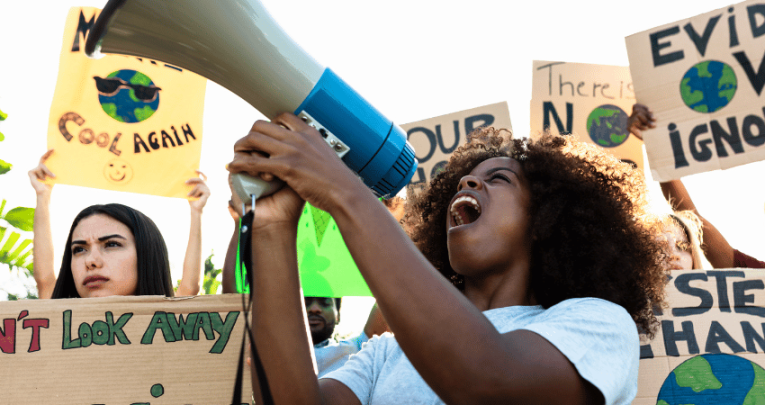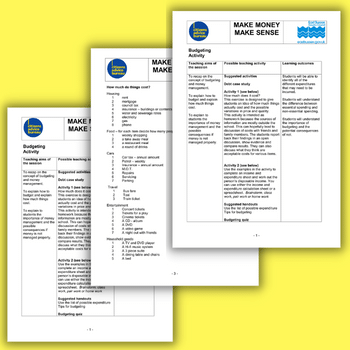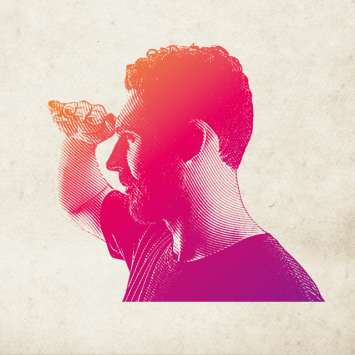Teaching citizenship – Practical guidance, inspiration & resources

Hans Svennevig explains how the study of citizenship can help schools to develop informed, engaged and participatory citizens at a time of relentless flux…

- by Hans Svennevig
- Subject leader of Citizenship PGCE at UCL Visit website

How can we go about teaching citizenship in a way that develops students to be critically informed, willing to engage and keen to participate in democracy when faced with the challenges of our times?
Here, I want to help you do just that. Because by doing so, we can – as the recently published 2025 interim Curriculum and Assessment Review report puts it – develop a “Flourishing civil society, [while] promoting social cohesion and sustaining democracy.”
A 2024 Ofcom survey found that 88% of 16- to 24-year-olds accessed news online. This might seem concerning to some, but it’s actually a win. Indeed, the same survey found that 96% of adults surveyed accessed ‘some form of news’. This indicates that these are the days of being hyper-informed.
The key now, however, is to make sure that people are critically informed. A good starting point for this is Blachford and Joy’s 2019 REVIEW model.
When encountering news – wherever it’s found and whatever it’s about – it’s important to develop young people’s engagement of that news by teaching them how to:
- assess the outlet’s reputation and the evidence for its claims
- verify its sources
- consider the piece’s intent and the emotions it conveys
- weigh up its overall merits
A better media diet
To help with this, get your students using online sources such as fullfact.org. As educators, you should also be aware of problematic media coverage and how to counter it, especially around conspiracy theories.
A good primer here would be to listen to my colleague Jeremy Hayward discussing that topic on a podcast hosted by the UCL Centre for Holocaust Education.
Social media is beset by a range of significant dangers that we need to protect children and young people from. This is why I’d encourage anyone to look into the work of Professor Sonia Livingstone on children’s digital rights.
Not all young people are engaging with, and manipulated by predatory influencers. However, we need to help them combat extremism wherever they encounter it.
When researching the Prevent Duty in schools, we came across evidence showing that children actively wanted their teachers to teach them about facts, and how to interpret and make sense of current events.
Switching off
When teaching young people how to be critically informed and engaged, it’s also important to teach them how to switch off.
When did you last switch off? Being hyper-informed can be exhausting, making it vital that we take time to tune out and rest.
I’d encourage you to help young people learn more about the world around them. We’re much more likely to solve the climate emergency if we remind ourselves how intrinsically we’re connected with nature. The National Education Nature Park programme can help you get the ball rolling.
In a world filled with conflicting comments around free speech, while loud voices advocate for the banning of certain words, books, comics, TV shows, films, video games, mobile phones and entire social media platforms, we’re perhaps better off equipping young people with the skills of critical analysis, questioning and interpretation imparted through citizenship teaching.
Through this, they will come to value accuracy, ethics, honesty and integrity. At the same time they’ll hopefully get to explore and experience a range of diverse cultures and positive role models.
Participatory citizens
As noted by Lee Jerome and Hugh Starkey in their 2021 book, Children’s Rights Education in Diverse Classrooms, it’s important to remember that children are citizens too.
As such, while we ought to be ensuring that they’re critically engaged and informed, we should also be enabling them to participate.
In a polarised world, this starts with discussion. The Deliberative Classroom project from the Association for Citizenship Teaching can help here. So can the classroom tools offered by English Speaking Union.
Amnesty International’s books Know Your Rights and Claim Them for older children, and These Rights Are Your Rights for younger readers contain a range of case studies showing children utilising their rights.
Trending
More citizenship teaching resources to try
Young people already have a variety of tools with which to express themselves, including AI. So why not energise them by using these tools to create an action plan for an active citizenship cause aimed at raising awareness around an issue they care about?
The charity First Give can help them find an issue to campaign on. If they want to be involved in climate education – and if you need some inspiration yourself – check out the Teaching Sustainable Futures modules from the UCL Centre for Climate Change and Sustainability Education. Or learn from the environmental projects supported by Students for Organising Sustainability.
Students might be particularly interested in peace education. I recommend the free resources produced by the Peace Education Network.
Perhaps your students want to get involved in politics, or are interested in disaster preparation. Or virtual reality, race and racism, or economic education. If so, the free, practitioner-led Teaching Citizenship journal is worth a read. Or you could dip into the resources produced by Young Citizens or Democracy Classroom.
Meaningful and achievable
Once you’ve identified what causes they care about, encourage them to draft letters to their local elected representatives. Or invite local community members into the school for a collaborative co-learning experience utilising some of the citizenship pedagogies I’ve presented here.
Make their citizenship experiences meaningful, long-lasting and achievable.
How can we remain hopeful and committed to improving the situation when things appear to be so bleak? I don’t think we, as teachers, have any other option.
It would be pretty unhelpful in our line of work if we were to simply give up. I therefore hope that this article refreshes and reminds you of the rich toolkit of possibilities available to us when teaching citizenship lessons.
So when the next child asks, “What’s the point?” – you can tell them.
Teaching citizenship: a case study
Alison Jewitt, head of citizenship at London Nautical, A City of London Academy, explains what her school does…
We teach students about the ongoing conflict between Israel and Palestine through the lens of human rights. We also teach them the knowledge needed to manage interactions with law enforcement, and how to critically analyse the media.
We’ve additionally incorporated teaching around grassroots campaigning activity – such as the efforts to save a local skatepark.
Then, through their own active citizenship projects, students soon discover how they can become a part of their local community, and the meaningful changes they can make.
Our students have considered engaging with a range of issues, including campaigning for a more affordable uniform, and returning to non-disposable, sustainable cutlery following COVID.
Local area issues have included the gentrification of London’s Elephant and Castle, and the lack of sports facilities accessible to young people in our borough.
Other students have worked to raise awareness of more global issues, such as the plight of Angolan TikToker, Ana da Silva Miguel (also known as Neth Nahara).
Hans Svennevig is subject leader of the Citizenship PGCE at IOE, UCL’s Faculty of Education and Society.










